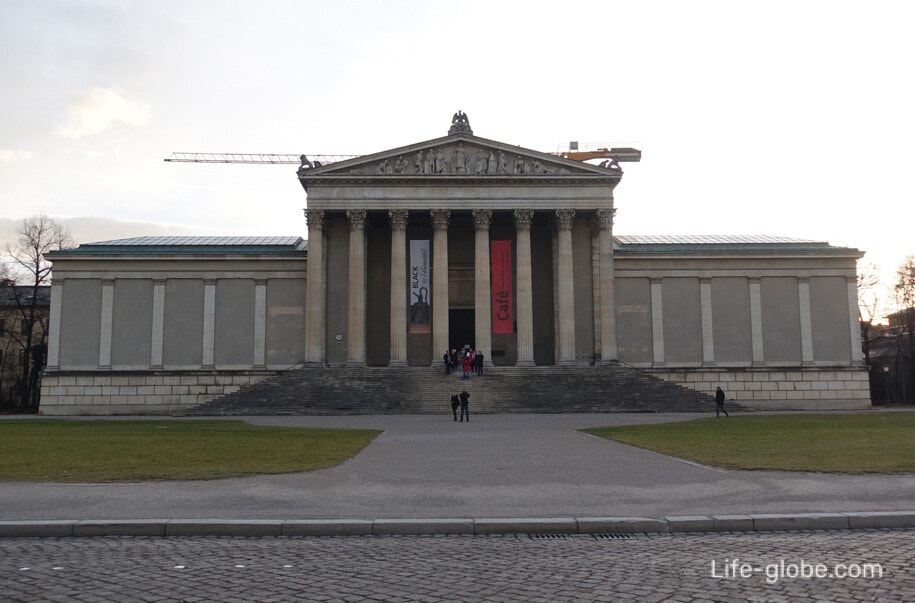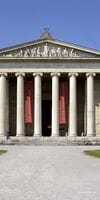Glyptothek is a museum in Munich, with a collection of ancient sculpture and glyptics.
Glyptotheca is also called the building itself, which houses the collection.
The Glyptothek building is the oldest public museum in Munich and the only museum in the world dedicated exclusively to ancient sculpture.
The building was commissioned by crown Prince (later king) Ludwig I of Bavaria, to embed personal and family collection of Greek and Roman sculptures.
Ludwig I discovered my passion for ancient works of art in his youth. He wanted to share his collection (a collection of his family of Wittelsbach) Greek and Roman sculptures with the public, and for that purpose commissioned the construction of a separate building.
The building was designed by Leo von Klenze and built in the Northern part of the Royal square from 1816 to 1830 in neoclassical style and completely made of marble.
The concept of "Museum" introduced into circulation librarian Ludwig I, formed from the Greek word "glyptein", which means "cut stone".
During the Second world war the Glyptothek was destroyed. Even before the destruction of the building, in order to safeguard the Museum's collection was outsourced. The restoration work of the building was started in 1947, and it was decided to carry out the building in a more simple form. For example, the walls on the inner side was made of red brick and light colored plaster and colored frescoes of Peter Cornelius depicting Greek gods, which was formerly a part of the building has not been restored. The Glyptothek was reopened to visitors in 1972.
Today the building of the Glyptothek, made in the classical Greek-Italian style. Has ionic columns, a portico with a triangular pediment and niches in the external walls are frequent, in which 18 original Roman and Greek sculptures, six on each of three sides of the building (except the back).
Pediment over the main entrance dedicated to the goddess Athena, Protectress of the plastic art.
Sculptures in the niches of the building on the South side of the Glyptothek, (facing the Royal square) represent mythical and historical artists: Daedalus, Prometheus, Adrian, Pericles, Phidias and Vulcan. In the niches on the Western and Eastern sides of the building hosts the sculptors of the Renaissance era, when he built the Glyptothek, including Bertel Thorvaldsen and Antonio Canova, whose works were previously exhibited in the hall of the Glyptothek, but was later moved to the Neue Pinakothek.
The Windows of the building overlook the courtyard, around which are arranged rooms of the Museum.
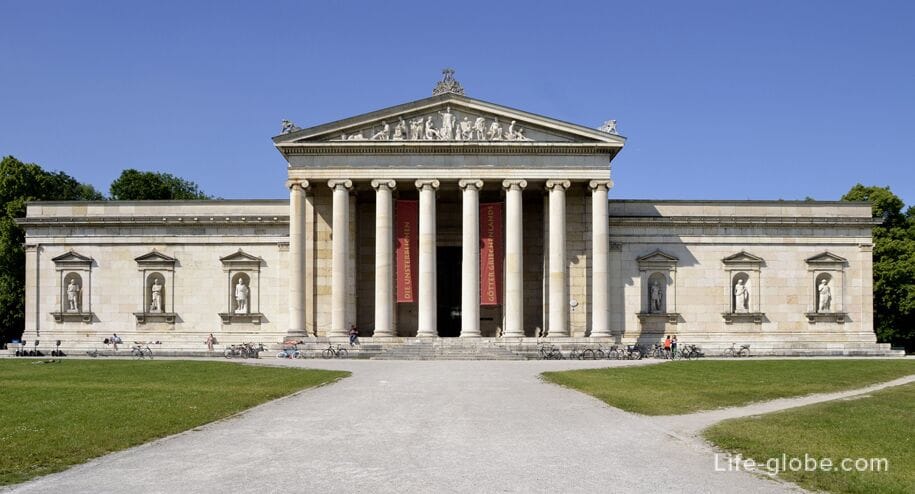
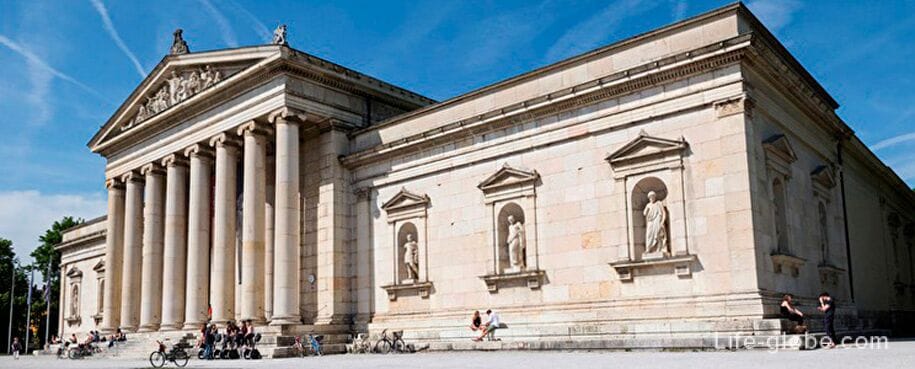
The collection of the Munich Glyptothek, includes works of art from four eras, from archaic period (circa 650 BC) to late Roman (circa 400 BC), namely, the collection, which includes masterpieces of archaic, classical, Hellenistic and Roman Imperial periods, including famous masterpieces such as:
- "The Faun Barbarian", also called "the Drunk old man";
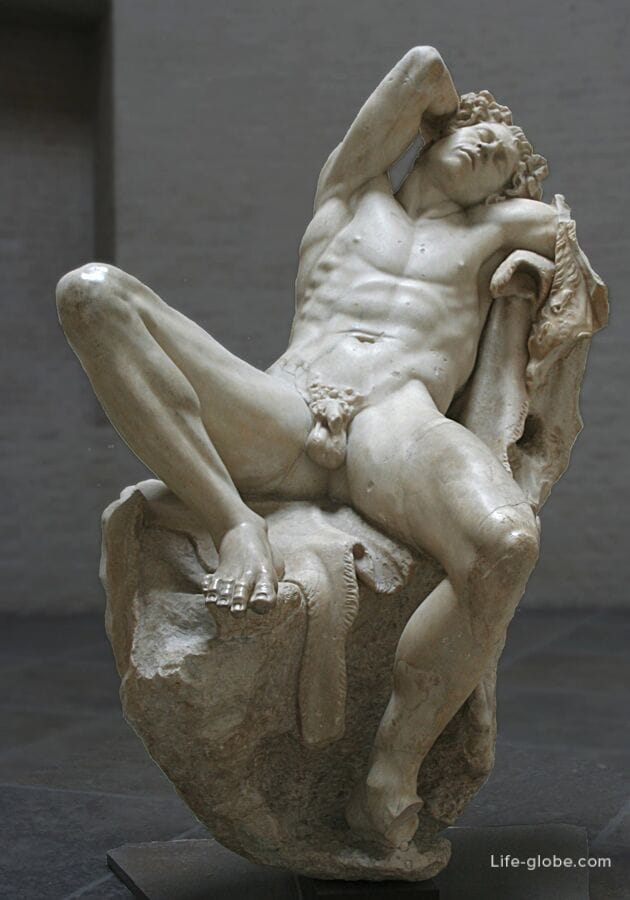
- valuable pieces from the pediments of the aphaia temple of Aegina island (the so-called "aginity"), purchased in 1813.
Details of the Central pediment of temple of aphaia
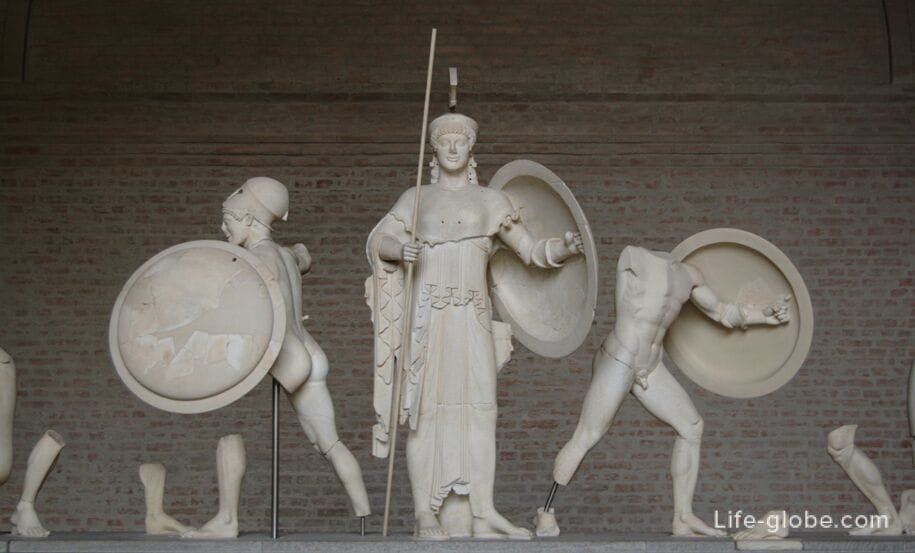
- "Boy with the goose";
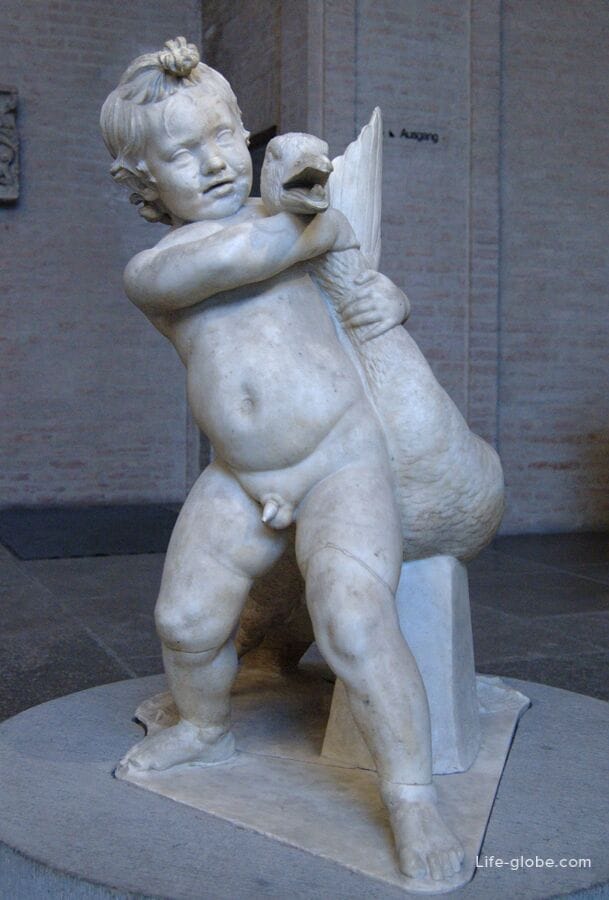
- "Old drunkard with lagunasol";

- The "Rondanini Medusa", a marble head of the Gorgon Medusa;
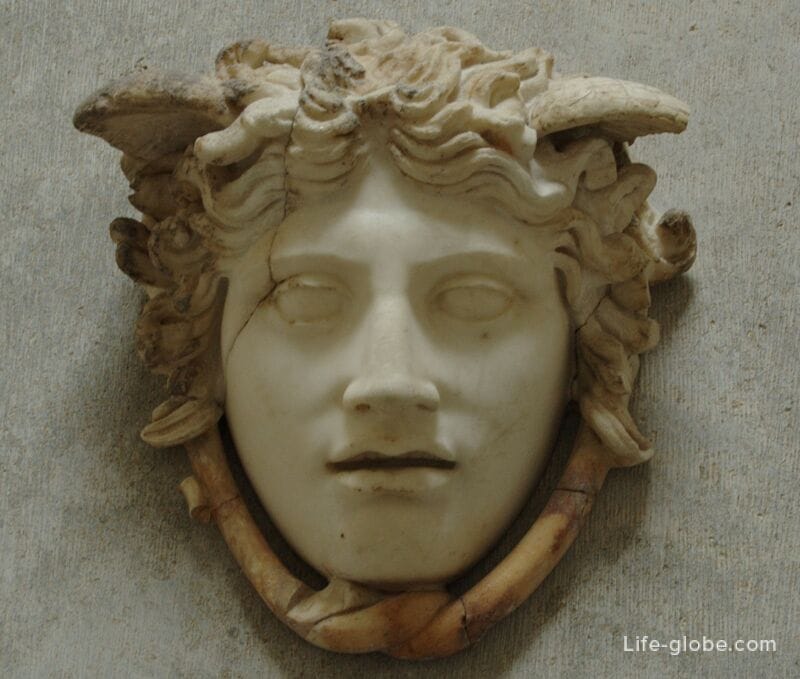
"Munich Kouros" - the typical image of a young man or male virgin counterpart, which is usually portrayed naked, etc.
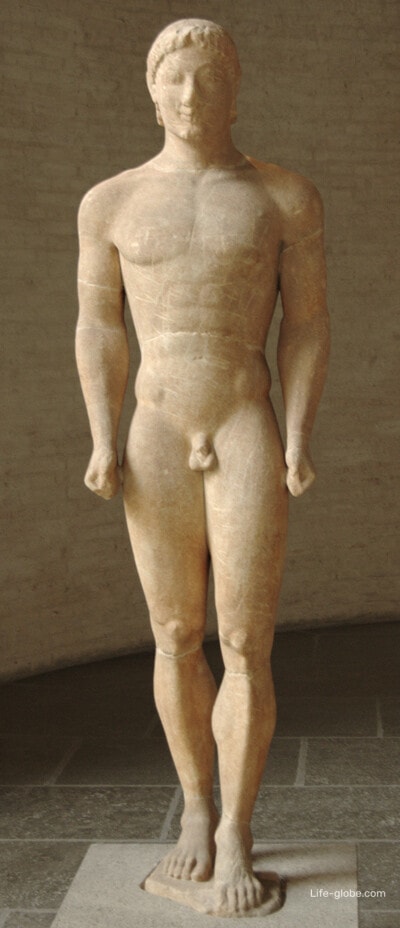
The hall containing the art of the Roman period bust of Trajan (reign 98-117 A. D.) is ahead in the center.
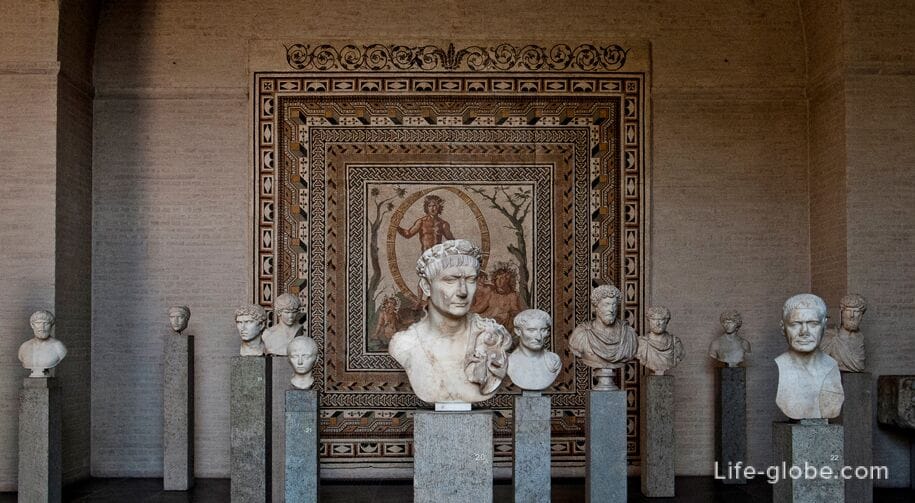
All this makes the Museum one of the most famous and visited museums in Munich.
Practical information
The Glyptothek is part of a range of arts Munich - Museum quarter of Munich and the cultural center known outside of the city (in Bavaria and in Europe).
Glyptothek Munich is located in the city centre, on the Royal square (Königsplatz / Königsplatz), at the address: Königsplatz 3.
Hours Glyptothek, entrance fees and conditions it is recommended to specify directly in front of the Museum visit on the official website.
The website Glyptothek, Munich: glyptothek-Munich.
P. S. On the opposite side of the Glyptothek (the Royal square) is a Museum "the State antique collection" (Staatliche Antikensammlung), which presents the objects of Etruscan, Greek and Roman antiquities of daily use and art, such as vases, vessels, figurines, bronzes, glass, gold and precious stones.
In fact, these two museums are located opposite each other, complement the collection of each other and in a broader sense, are one. Read more about State antique collection...
